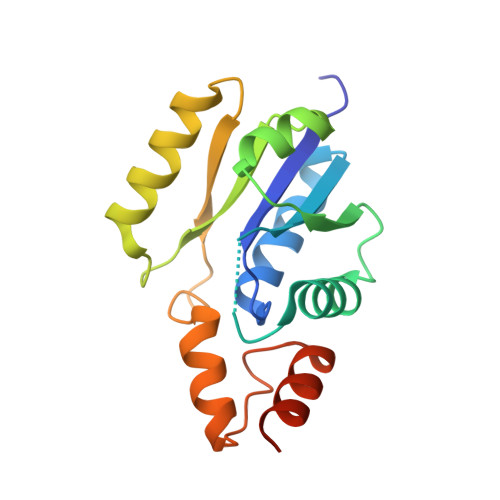The structure of Staphylococcus aureus phosphopantetheine adenylyltransferase in complex with 3'-phosphoadenosine 5'-phosphosulfate reveals a new ligand-binding mode
Lee, H.H., Yoon, H.J., Kang, J.Y., Park, J.H., Kim, D.J., Choi, K.H., Lee, S.K., Song, J., Kim, H.J., Suh, S.W.(2009) Acta Crystallogr Sect F Struct Biol Cryst Commun 65: 987-991
- PubMed: 19851003
- DOI: https://doi.org/10.1107/S1744309109036616
- Primary Citation of Related Structures:
3F3M - PubMed Abstract:
Bacterial phosphopantetheine adenylyltransferase (PPAT) catalyzes the penultimate step in the coenzyme A (CoA) biosynthetic pathway. It catalyzes the reversible transfer of an adenylyl group from ATP to 4'-phosphopantetheine (Ppant) to form dephospho-CoA (dPCoA) and pyrophosphate. Previous structural studies have revealed how several ligands are recognized by bacterial PPATs. ATP, ADP, Ppant and dPCoA bind to the same binding site in a highly similar manner, while CoA binds to a partially overlapping site in a different mode. To provide further structural insights into ligand binding, the crystal structure of Staphylococcus aureus PPAT was solved in a binary complex with 3'-phosphoadenosine 5'-phosphosulfate (PAPS). This study unexpectedly revealed a new mode of ligand binding to PPAT, thus providing potentially useful information for structure-based discovery of inhibitors of bacterial PPATs.
Organizational Affiliation:
Department of Chemistry, College of Natural Sciences, Seoul National University, Seoul 151-742, Republic of Korea.















